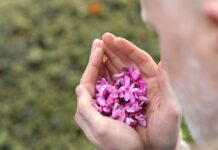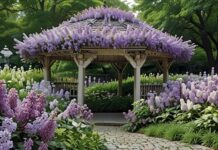Hydrangea trees are a stunning addition to any garden, known for their large, vibrant blooms and lush foliage. With numerous varieties, each with its own unique characteristics, selecting the right hydrangea tree for your garden can enhance your landscape’s beauty and functionality. This comprehensive guide will explore popular varieties of hydrangea trees, their climate and soil requirements, size and growth patterns, and aesthetic considerations for landscape design. By the end, you’ll be well-equipped to choose the perfect hydrangea tree for your garden.
Popular Varieties of Hydrangea Trees
Hydrangeas come in various species and cultivars, each offering distinct features and benefits. Here are some of the most popular hydrangea tree varieties:
1. Hydrangea paniculata (Panicle Hydrangea)
- Description: Known for their large, cone-shaped flower clusters, panicle hydrangeas are one of the most versatile and hardy types. They can grow up to 15 feet tall and produce flowers in white, pink, and green shades.
- Popular Cultivars:
- ‘Limelight’: Features lime-green blooms that turn pink as they mature.
- ‘Pee Gee’: One of the oldest and most reliable cultivars, with large white flowers that turn pink in the fall.
- ‘Tardiva’: Blooms later in the season, extending the hydrangea bloom period.
2. Hydrangea arborescens (Smooth Hydrangea)
- Description: This species includes the famous ‘Annabelle’ variety, known for its large, spherical white blooms. Smooth hydrangeas are hardy and can thrive in various climates.
- Popular Cultivars:
- ‘Annabelle’: Produces enormous, snowball-like flowers that can be as large as 12 inches in diameter.
- ‘Incrediball’: An improved version of ‘Annabelle’ with even larger and more robust blooms.
- ‘Haas’ Halo’: Features lacecap blooms that attract pollinators.
3. Hydrangea quercifolia (Oakleaf Hydrangea)
- Description: Named for their oak-like leaves, oakleaf hydrangeas offer stunning fall foliage colors in addition to their white to pinkish flower clusters. They are well-suited to woodland gardens.
- Popular Cultivars:
- ‘Snow Queen’: Features large, upright flower clusters and excellent fall color.
- ‘Alice’: Known for its robust size and large blooms.
- ‘Ruby Slippers’: Compact variety with blooms that age to a deep pink-red.
4. Hydrangea macrophylla (Bigleaf Hydrangea)
- Description: Known for their ability to change color based on soil pH, bigleaf hydrangeas can produce blue, pink, or purple flowers. They are often divided into two types: mophead and lacecap.
- Popular Cultivars:
- ‘Endless Summer’: A reblooming variety that flowers on both old and new wood.
- ‘Nikko Blue’: Classic mophead hydrangea with intense blue flowers in acidic soil.
- ‘Let’s Dance Rave’: Compact variety with vibrant blue or pink flowers.
5. Hydrangea petiolaris (Climbing Hydrangea)
- Description: Unlike other hydrangeas, climbing hydrangeas are vigorous climbers that can cover walls, fences, and trees. They produce fragrant white flowers and are known for their attractive peeling bark.
- Popular Cultivars:
- ‘Miranda’: Features variegated leaves with creamy white edges.
- ‘Silver Lining’: Known for its silver-edged foliage and strong climbing habit.
Climate and Soil Requirements
Understanding the climate and soil requirements for hydrangeas is essential to ensure their healthy growth and abundant blooms. Different hydrangea species have varying needs, but some general guidelines can help you choose the right hydrangea for your garden.
Climate Requirements
- Cold Hardiness: Hydrangea species vary in their cold hardiness. For example, Hydrangea paniculata and Hydrangea arborescens are more cold-hardy and can withstand temperatures down to USDA zone 3. In contrast, Hydrangea macrophylla and Hydrangea quercifolia are better suited for milder climates (zones 5-9).
- Heat Tolerance: While hydrangeas generally prefer cooler climates, some species, like Hydrangea paniculata, are more tolerant of heat and can thrive in warmer regions.
Soil Requirements
- Soil pH: The pH of your soil can significantly impact the color of Hydrangea macrophylla blooms. Acidic soils (pH below 6) produce blue flowers, while alkaline soils (pH above 7) result in pink blooms. Other hydrangea species are less affected by soil pH.
- Soil Type: Hydrangeas prefer well-drained, fertile soils rich in organic matter. Heavy clay soils can lead to root rot, while sandy soils may require additional organic material to retain moisture.
- Moisture: Consistent moisture is crucial for hydrangea health. While they do not tolerate waterlogged soil, they require regular watering, especially during dry periods. Mulching around the base of the plant can help retain soil moisture and regulate temperature.
Size and Growth Patterns
Hydrangeas vary widely in size and growth patterns, making it essential to choose a variety that fits your garden’s space and design.
Size
- Small to Medium (3-6 feet): Varieties like ‘Endless Summer’ and ‘Ruby Slippers’ are suitable for smaller gardens or container planting.
- Medium to Large (6-12 feet): ‘Limelight’ and ‘Snow Queen’ are ideal for creating focal points in larger gardens.
- Large (12+ feet): ‘Pee Gee’ and ‘Tardiva’ can grow into substantial trees, providing significant visual impact.
Growth Patterns
- Upright: Varieties like Hydrangea paniculata tend to have an upright growth habit, making them suitable for hedges or vertical accents.
- Spreading: Hydrangea arborescens varieties often have a spreading growth habit, ideal for filling in larger garden areas.
- Climbing: Hydrangea petiolaris is a vigorous climber, perfect for covering walls, fences, or trellises.
Growth Rate
- Fast-Growing: Hydrangea paniculata and Hydrangea arborescens are known for their rapid growth, quickly filling in garden spaces.
- Moderate to Slow-Growing: Hydrangea quercifolia and Hydrangea petiolaris have a more measured growth rate, allowing for more controlled garden design.
Aesthetic Considerations and Landscape Design
Hydrangeas are incredibly versatile in garden design, offering various aesthetic possibilities. Here are some key considerations for incorporating hydrangeas into your landscape:
Color Coordination
- Complementary Colors: Pair hydrangeas with plants that have complementary colors. For example, blue hydrangeas (in acidic soil) look stunning alongside yellow or orange flowers.
- Monochromatic Schemes: Create a cohesive look by planting hydrangeas with flowers in similar hues. For instance, pink hydrangeas (in alkaline soil) can be paired with other pink or red blooms for a harmonious garden palette.
Seasonal Interest
- Year-Round Beauty: Hydrangeas offer year-round interest. Choose varieties that provide not only summer blooms but also attractive fall foliage and winter bark. Oakleaf hydrangeas, for example, offer vibrant fall colors, while climbing hydrangeas have peeling bark that adds winter interest.
- Succession Planting: Plant hydrangeas alongside other plants that bloom at different times to ensure continuous color and interest throughout the growing season.
Garden Style
- Formal Gardens: Use hydrangeas with structured growth habits, like Hydrangea paniculata, to create formal hedges or focal points. Their upright growth and large blooms add elegance and order to formal garden designs.
- Cottage Gardens: Incorporate hydrangeas with a more relaxed growth habit, like Hydrangea arborescens, into cottage gardens for a natural, informal look. Their abundant blooms and spreading habit complement the lush, overflowing style of cottage gardens.
- Woodland Gardens: Choose hydrangeas like Hydrangea quercifolia and Hydrangea petiolaris for woodland gardens. Their ability to thrive in partial shade and their naturalistic appearance make them perfect for blending into woodland settings.
Placement and Spacing
- Focal Points: Use larger hydrangeas as focal points in your garden. Plant them in prominent locations where their stunning blooms can be fully appreciated.
- Borders and Hedges: Plant hydrangeas in rows to create beautiful borders or hedges. Ensure adequate spacing to allow for proper air circulation and growth.
- Containers: Smaller hydrangea varieties can be grown in containers, adding flexibility to your garden design. This is especially useful for patios, balconies, or areas with limited space.
Companion Plants
- Shade Tolerant Companions: Pair hydrangeas with other shade-tolerant plants like hostas, ferns, and astilbes. These plants thrive in similar conditions and can create a lush, layered look in shaded areas.
- Sun-Loving Companions: If planting hydrangeas in sunnier spots, consider companions like daylilies, sedum, and ornamental grasses. These plants can handle more sun and provide contrasting textures and colors.
- Pollinator-Friendly Plants: Include pollinator-friendly plants like lavender, echinacea, and salvia to attract beneficial insects to your garden. Hydrangeas, particularly lacecap varieties, also attract pollinators, creating a vibrant, buzzing garden ecosystem.
FAQs about Right Hydrangea Tree for Your Garden
Consider your climate, soil type, garden size, and desired aesthetic. Choose a variety that matches your growing conditions and complements your landscape design. For example, Hydrangea paniculata is a good choice for colder climates, while Hydrangea macrophylla is ideal for coastal gardens.
To achieve blue blooms, hydrangeas need acidic soil with a pH below 6. You can lower soil pH by adding sulfur or aluminum sulfate. Conversely, to get pink blooms, the soil should be more alkaline (pH above 7).
Amend your soil with organic matter like compost or well-rotted manure to improve drainage and fertility. Mulching around the base of the plant helps retain moisture and regulate soil temperature.
Hydrangeas can be affected by pests like aphids, spider mites, and scale. Common diseases include powdery mildew, leaf spot, and root rot. Regular monitoring, proper watering, and good air circulation can help prevent these issues.
Conclusion
By understanding the different hydrangea varieties, their climate and soil requirements, size and growth patterns, and aesthetic considerations for landscape design, you can select the perfect hydrangea tree for your garden. Whether you want to create a focal point, add seasonal interest, or design a harmonious garden palette, hydrangeas offer endless possibilities for enhancing your outdoor space.













